Snow leopards are among the most enigmatic and elusive big cats, thriving in some of the world’s most challenging terrains. Found primarily in the mountain ranges of Central and South Asia, these majestic creatures have evolved various adaptations that allow them to survive and even thrive in harsh environments. This article explores the unique characteristics and behaviors that enable snow leopards to endure the harsh climates and rugged landscapes they call home.
Habitat and Range Living in Extremes
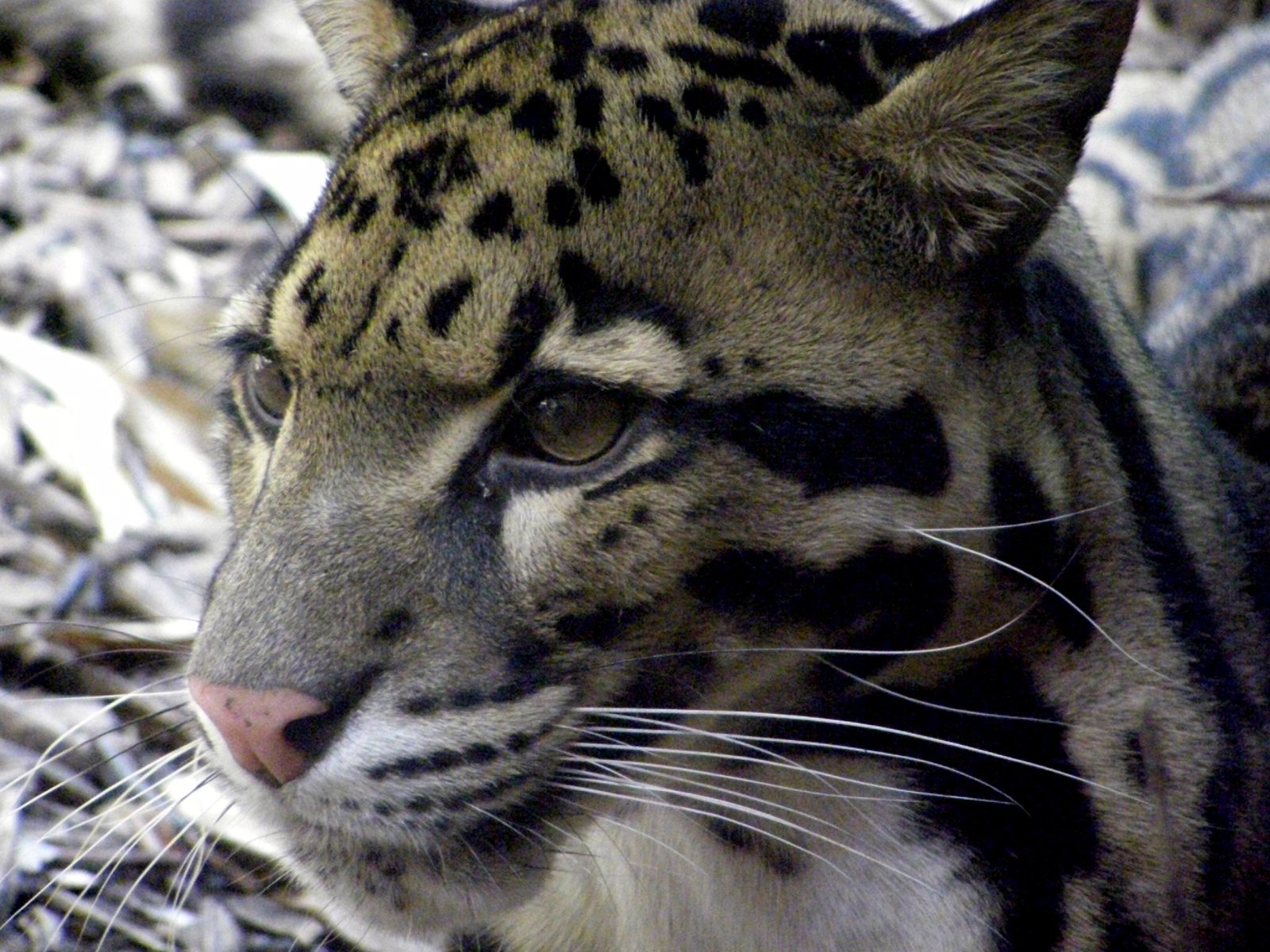
Snow leopards are native to the vast mountain ranges that include the Himalayas, the Altai, and the Hindu Kush. They inhabit altitudes ranging from 3,000 to 5,500 meters (9,800 to 18,000 feet), where temperatures can plunge well below freezing. The terrain is rugged, with steep slopes and rocky outcrops providing the perfect cover for these shy predators. Their ability to navigate and flourish in these extremes is a testament to their remarkable adaptations.
Physical Adaptations Built for Survival
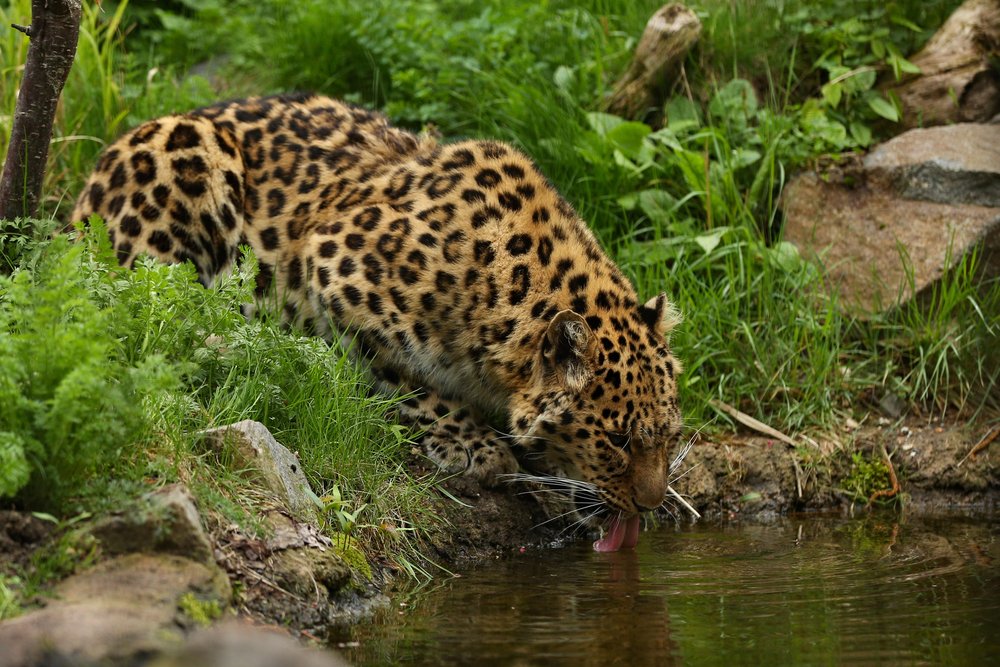
The snow leopard’s physical traits are ideally suited for its environment. Thick, soft fur insulates against the cold, while its coat’s smoky-gray coloration with rosettes provides perfect camouflage against the rocky landscape. Their large, powerful paws act like snowshoes, distributing their weight to prevent sinking into the snow. Additionally, their long, thick tails provide balance and can be wrapped around their bodies for warmth during cold nights.
Behavioral Adaptations The Art of Stealth

Snow leopards are solitary and elusive, roaming over vast areas to find prey. Their incredible agility allows them to leap as far as 15 meters (50 feet) in one bound, a skill crucial for ambushing prey. These cats are most active at dawn and dusk, aligning with the activity patterns of their prey and allowing them to conserve energy during the harshest parts of the day.
Diet and Hunting Strategies: Masters of Precision
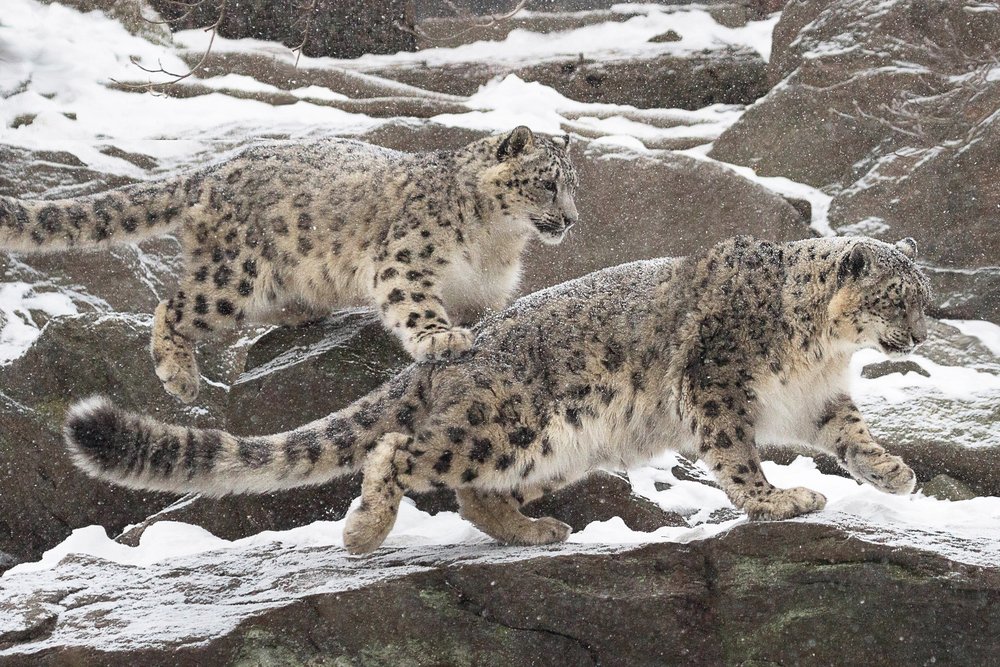
Snow leopards primarily hunt herbivorous mammals such as blue sheep, ibex, and Himalayan tahr. Their hunting strategy involves stalking their prey stealthily from above, using the element of surprise to their advantage. Their powerful build enables them to take down animals three times their size. When prey is scarce, snow leopards are opportunistic feeders, preying on smaller animals or even scavenging when necessary.
Reproductive Strategies Securing the Next Generation
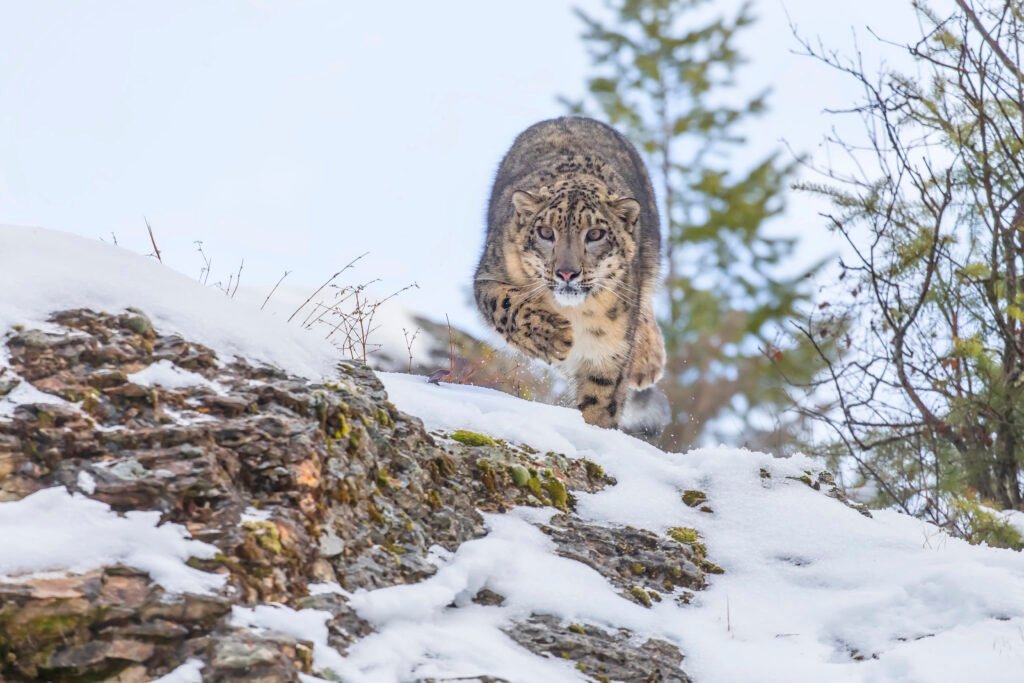
Snow leopards have adapted their reproductive strategies to ensure the survival of their species. Female snow leopards typically give birth to two to three cubs after a gestation period of about 90-100 days. The cubs are born during the spring or early summer when prey is more abundant, providing the mother with the necessary resources to nurse her young. These cubs remain with their mother for up to two years, learning the skills necessary to survive in their harsh environment.
Communication and Territoriality Subtle Signs
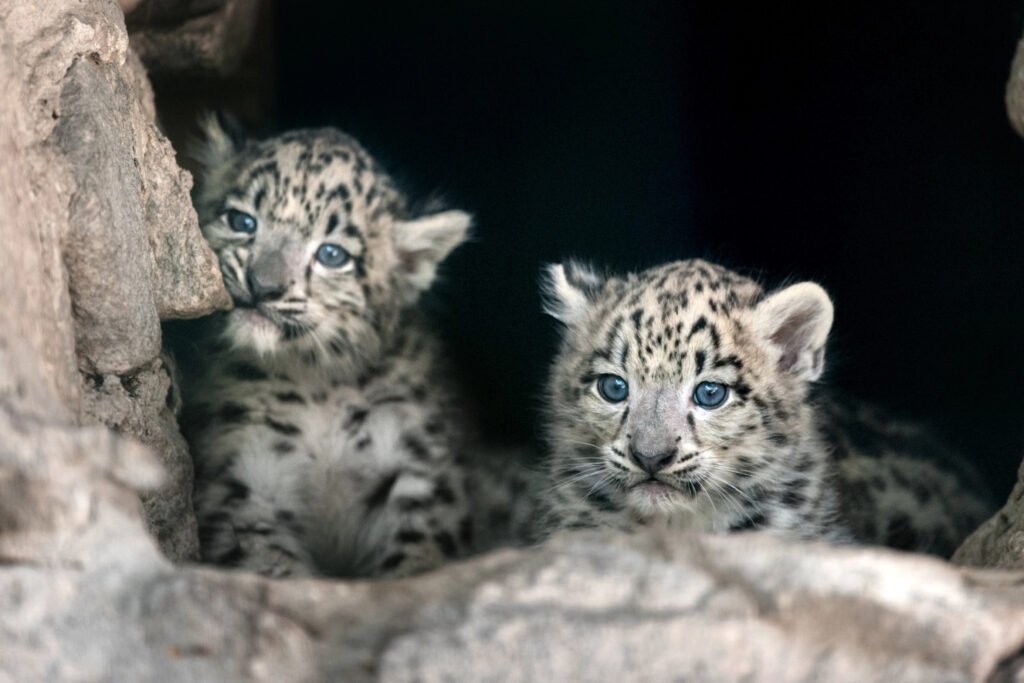
Though typically solitary, snow leopards communicate with others through scent markings, vocalizations, and scratch marks on the ground and rocks. These markings help them establish and maintain territories without confrontations. Vocalizations, such as growls and hisses, are used during rare interactions with other leopards, particularly during the mating season.
Conservation Challenges A Threatened Predator
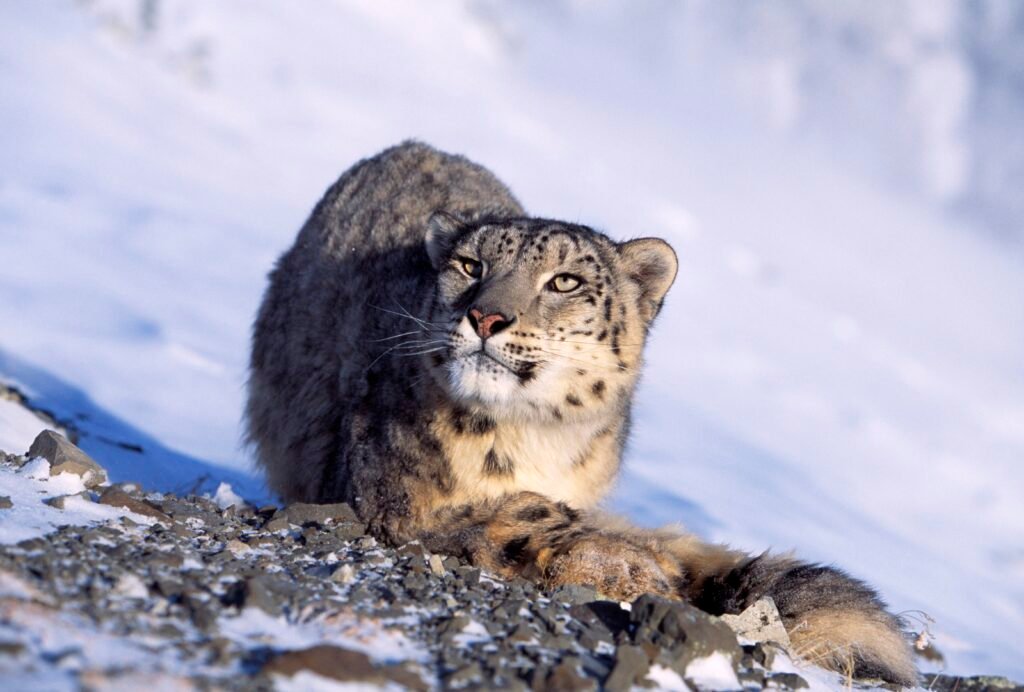
Despite their adaptations, snow leopards face numerous threats that jeopardize their survival. Habitat fragmentation, human-wildlife conflict, and poaching for their pelts and bones are significant concerns. As the human population expands into snow leopard habitats, these challenges are becoming more pressing, prompting the development of conservation efforts aimed at preserving these magnificent cats.
Conservation Initiatives A Ray of Hope
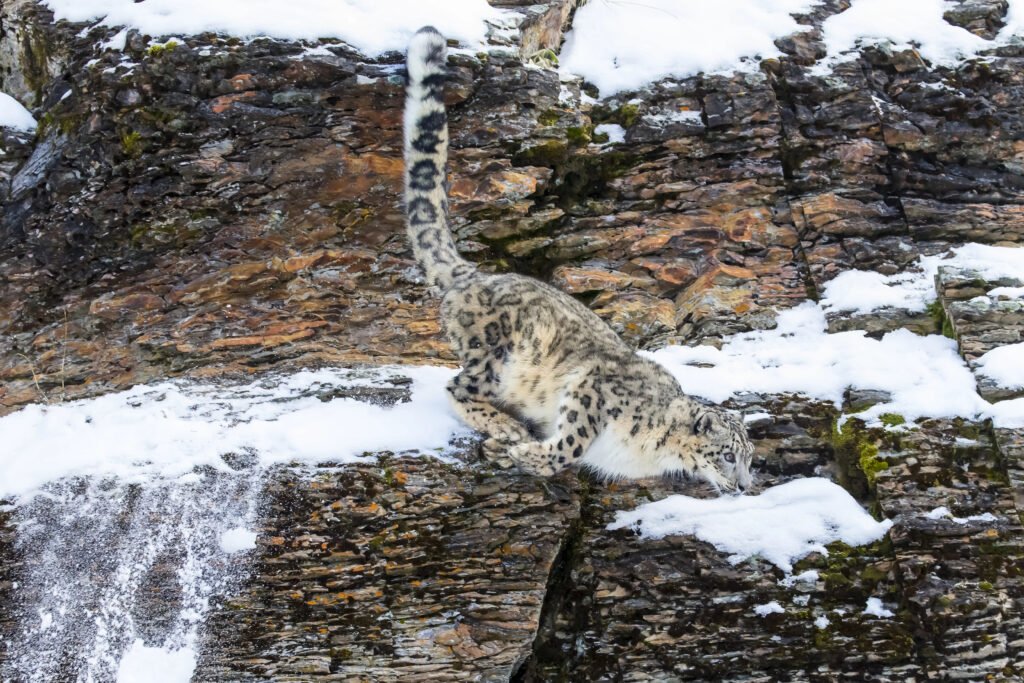
Various organizations and governments are working to protect snow leopards and their habitats. Initiatives include strengthening anti-poaching laws, creating protected areas, and promoting sustainable livelihoods for local communities to reduce human-wildlife conflict. Programs like the Snow Leopard Trust engage local communities in conservation efforts, highlighting the importance of education and collaboration in preserving this endangered species.
The Future of Snow Leopards A Call to Action
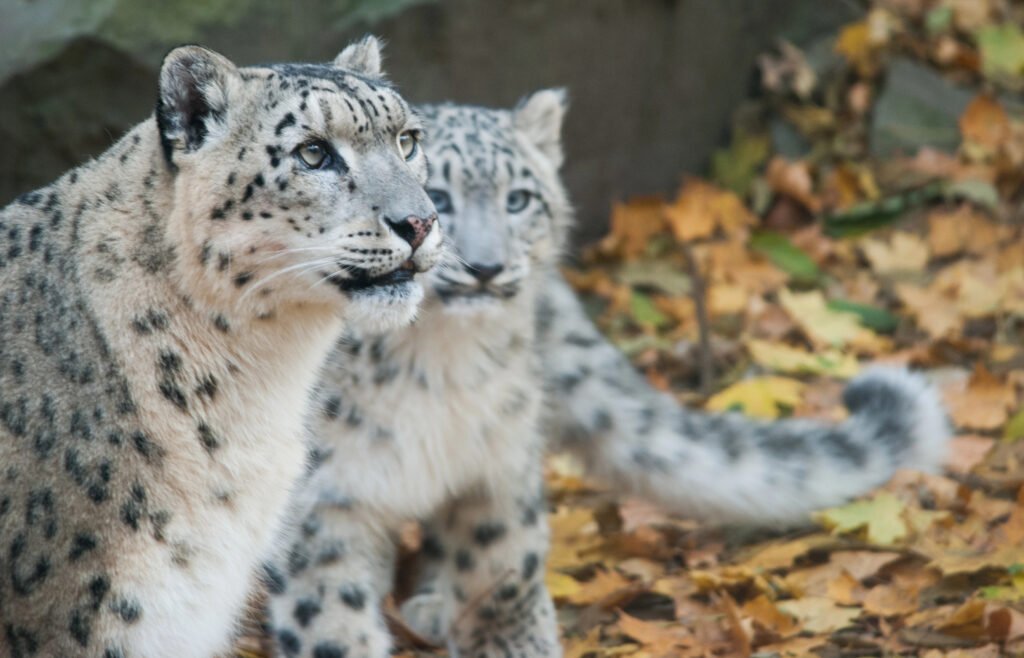
Ensuring the survival of snow leopards requires a concerted effort from the global community. By supporting conservation initiatives, raising awareness, and advocating for policies that protect these cats and their habitats, we can help secure a future where snow leopards continue to thrive in their natural environments. As ambassadors of their mountainous realms, snow leopards remind us of the intricate balance of nature and the importance of preserving our planet’s biodiversity.






